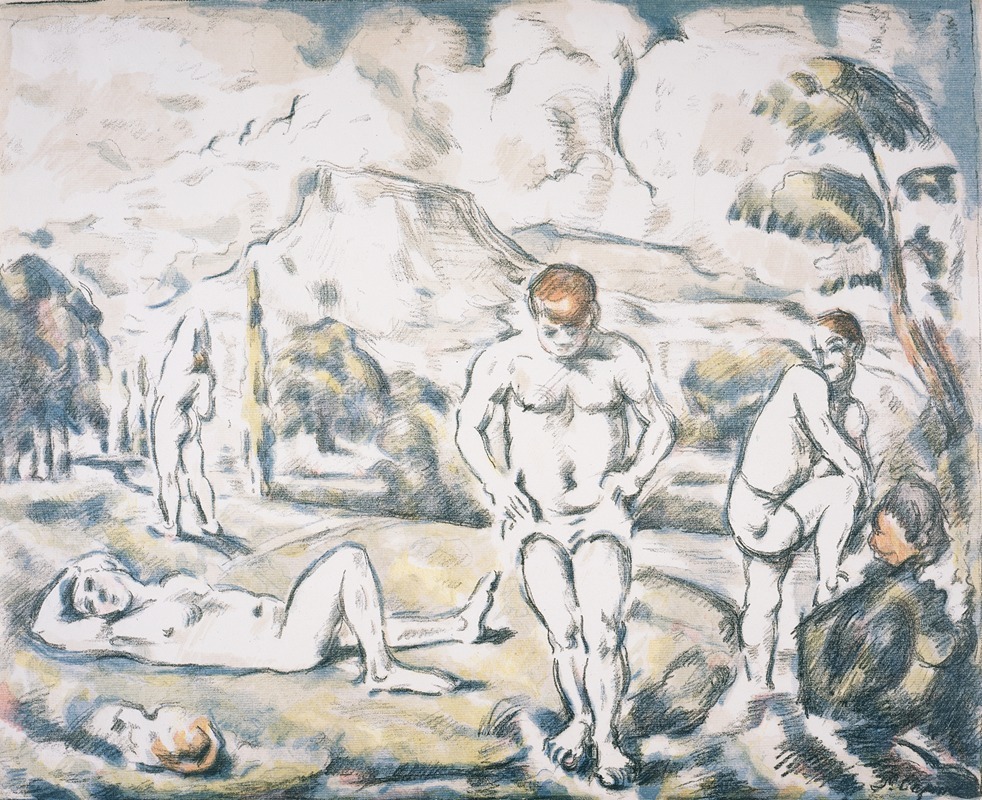
The Bathers
A hand-painted replica of Paul Cézanne’s masterpiece The Bathers, meticulously crafted by professional artists to capture the true essence of the original. Each piece is created with museum-quality canvas and rare mineral pigments, carefully painted by experienced artists with delicate brushstrokes and rich, layered colors to perfectly recreate the texture of the original artwork. Unlike machine-printed reproductions, this hand-painted version brings the painting to life, infused with the artist’s emotions and skill in every stroke. Whether for personal collection or home decoration, it instantly elevates the artistic atmosphere of any space.
"The Bathers" is a series of oil paintings by the French Post-Impressionist artist Paul Cézanne. These works are among the most famous and influential of his career, showcasing his unique approach to form, color, and composition. Cézanne worked on these paintings over several decades, with the most notable versions created between the late 19th century and the early 20th century.
Cézanne's "The Bathers" series includes several large-scale paintings, with the most renowned being "The Large Bathers" (Les Grandes Baigneuses), which he completed around 1906, the year of his death. This particular painting is housed in the Philadelphia Museum of Art. Another significant version is located in the National Gallery, London, and a third notable version can be found in the Barnes Foundation in Philadelphia.
The paintings depict groups of nude figures, typically women, in a natural landscape setting. Unlike the idealized nudes of classical art, Cézanne's bathers are characterized by their robust, almost sculptural forms and their integration into the surrounding environment. The figures are often arranged in dynamic, yet balanced compositions, creating a sense of harmony between the human body and nature.
Cézanne's approach to "The Bathers" reflects his broader artistic goals. He sought to capture the underlying structure of the natural world through a careful study of shapes, colors, and spatial relationships. His use of color is particularly notable; he employed a palette of muted, earthy tones, with subtle gradations that create a sense of depth and volume. The brushwork in these paintings is varied, ranging from broad, sweeping strokes to more precise, detailed applications, contributing to the overall texture and complexity of the works.
"The Bathers" series had a profound impact on the development of modern art. Cézanne's innovative techniques and his departure from traditional representations of the human figure influenced a wide range of artists, including Henri Matisse, Pablo Picasso, and the Cubists. His emphasis on the structural aspects of painting and his exploration of the relationship between form and color paved the way for many of the artistic movements of the 20th century.
Cézanne's dedication to "The Bathers" series is evident in the numerous studies and preparatory sketches he created. These preliminary works reveal his meticulous process and his constant experimentation with composition and form. Despite their unfinished appearance, these studies are highly valued for their insight into Cézanne's artistic vision and methodology.
In summary, Paul Cézanne's "The Bathers" series represents a significant achievement in the history of art. Through these paintings, Cézanne challenged traditional notions of beauty and representation, laying the groundwork for the modernist movements that followed. His innovative use of color, form, and composition continues to inspire and influence artists and art lovers around the world.


















